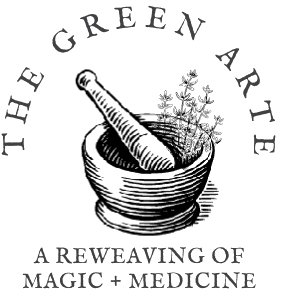Medicinal Herbs of Salt Lake City
Spring is just around the corner, and if you happen to live where I do here in Salt Lake City, you may be considering bringing medicinal herbs to your garden, raised beds, planters, or window containers. Here are just a few of my favorite easy-going medicinal herbs suitable for novice gardeners and experts alike- all do really well here without a lot of fuss or extra care.
If you want to learn more about the medicinal herbs that grow around the Salt Lake valley, join me for one of my herb walks throughout the growing seasons!
YARROW
This is a gorgeous plant that blooms late and maintains color later into the year than other blossoming plants. Yarrow mounds up- each year you’ll want to trim the plant back at harvest time and then watch as they return with vigor the following spring. Give Yarrow plenty of space to themselves and within a year or two you’ll have a massive plant with lush leaves and blossoms.
When you trim back Yarrow, cut the whole stalk at the base, hang upside down inside, and put leaves and flowers in a glass jar once fully dry. You can add Yarrow to hot herbal teas to help sweat out a cold and lower a persistent fever, add to styptic blends to help stop bleeding in minor scrapes and cuts, and add to a bath to work on nourishing your boundaries.
OREGANO & THYME
Both of these aromatic plants are warming, stimulating, and delicious. I love when we have medicinal plants that are also great as food- it ensures the plants we grow can show up in our kitchens all year long, not just when we’re feeling sick.
Oregano and Thyme make excellent potted plants and will usually do well in terracotta pots or plastic pots with good drainage. I like to keep mine in an area where they get 4-6 hours of full sun, then partial sun the rest of the day. I water them only when they look thirsty, giving them a big soak and then letting them dry back out before the next watering.
You can pluck leaves from both plants to add fresh to your favorite recipes, or cut back branches and hang dry or set in a food dehydrator on low for 2-3 days.
Add either or both of these herbs to teas for upper respiratory congestion, headache, cold and flu, and to help circulate the blood. You can also do respiratory steams where a small amount of these two aromatic herbs are added to other respiratory herbs to support the lungs.
CALENDULA
Related to marigolds, calendula bloom early and continue making flowers late into the year- even after frosts. These sun-orange flowers are real attention-getters and stand out in any garden. I’ve had mixed success with growing them in pots- they seem to prefer being able to stretch out in small beds or raised plots.
I harvest Calendula flowers as they peak- watching them for the day that the flower is as open as it will get. This is when they’re at peak energy and medicine. Give them one extra day to feed the bees, then harvest by cutting just under the flower bud. I prefer to dry there in my food dehydrator to ensure they fully dry and don’t go bad.
Calendula is a lovely addition to infused herbal oils for massage and skincare, hair rinses, herbal baths, and teas.
LAVENDER
Don’t overlook Lavender! Yes, everyone grows ornamental flowers here, but you can easily find starts of the medicinal Lavender species (Lavandula angustfolia) to bring something special to your garden. The bees, butterflies, and moths will love you!
Lavender is known for being a soothing plant rich in essential oils- but in my practice I work with Lavender as a nootropic- a terpine-rich herb that activates the limbic system of the brain while helping create more brain plasticity. Lavender helps us learn new things and new ways of doing things, release old patterns and conditioning, and more consciously choose how we want to show up for ourselves.
As the name implies, being related to lavande, to wash, Lavender is also a choice cleansing herb and can be added to baths, floor washes, and room sprays to purify air and energy.
HOLY BASIL
One of the easiest of all adaptogenic herbs to grow really loves Salt Lake City! This Mint-family relative, closely connected to culinary basil and peppermint, thrives in our climate. While Holy Basil (Tulsi) won’t survive the winters outdoors, this plant will get big, lush, and vibrant in just one growing season.
Holy Basil can do well in a pot but prefers raised beds in my experience. Water only when needed- she’s native to Southeast Asia and can handle heat and dry.
Harvest leaves gently and with deep respect as needed for teas, or wait until harvest time and cut back the stems, hang dry, and strip leaves into a glass jar for storage.
Holy Basil is a deeply calming, meditative, and heart-opening ally to work with and has a flavor and aroma that make any tea magical.
